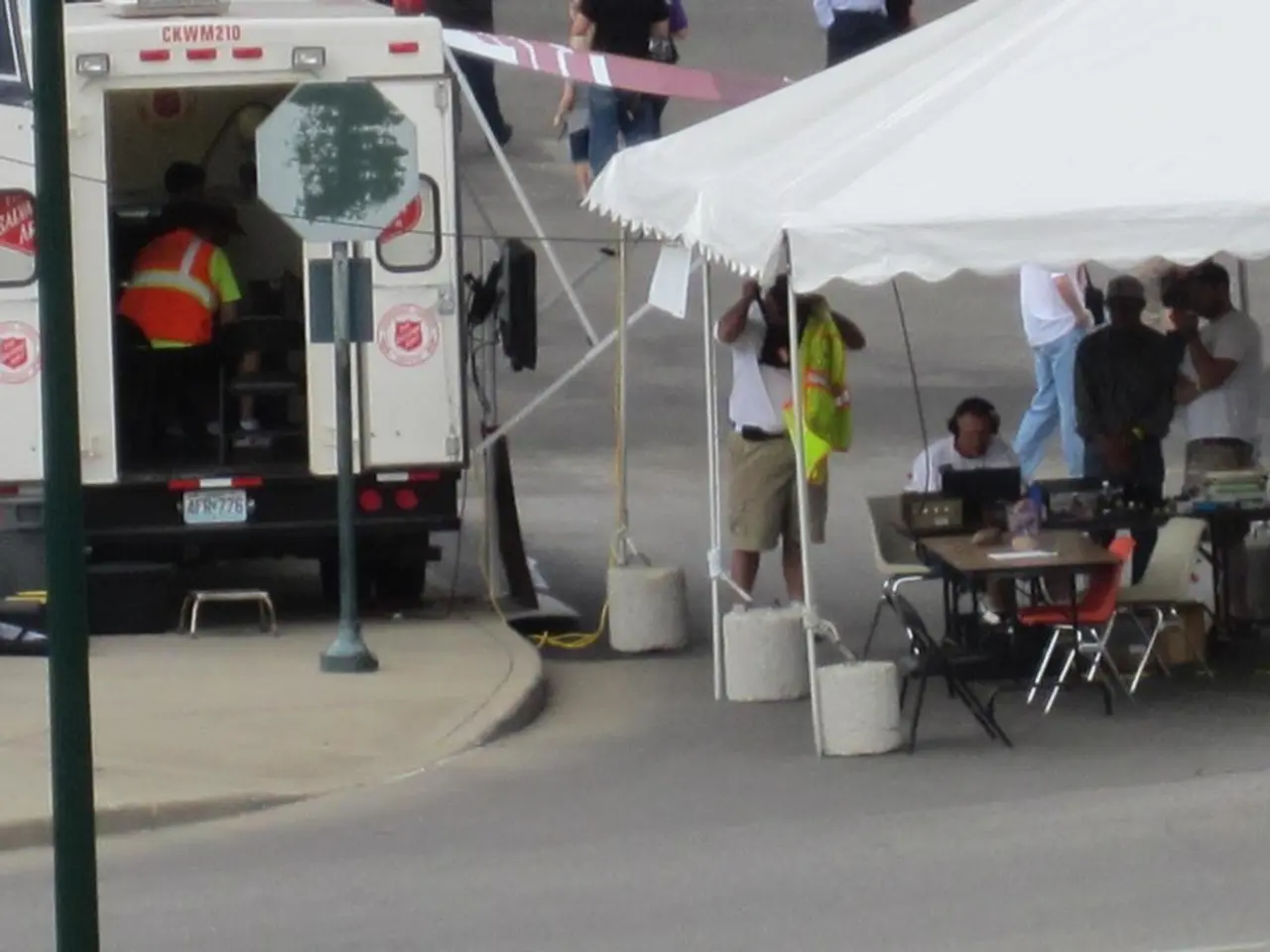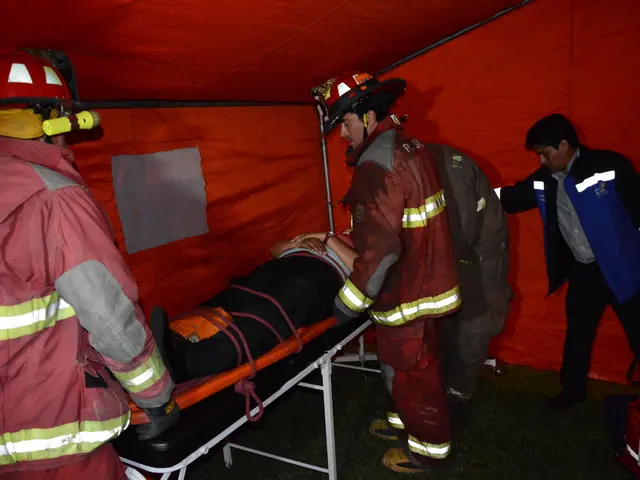Rural emergency rooms are progressively operating without the presence of medical doctors, according to experts' claims.
Rural Emergency Rooms Rely More on Physician Assistants and Nurse Practitioners Amidst Ongoing Challenges
In an effort to address persistent physician shortages and rural healthcare infrastructure issues, many emergency rooms (ERs) in rural America are increasingly staffed and operated by physician assistants (PAs) and nurse practitioners (NPs). According to a recent study, at least 7.4% of emergency departments across the U.S. did not have an attending physician on-site 24/7 in 2022, with this proportion varying wildly by state [1][5].
This trend is particularly prevalent in rural areas, where approximately 80% of U.S. counties are considered "healthcare deserts"—lacking adequate access to essential health services including emergency care [2]. These areas often face hospital closures and reduced federal funding, compounding access issues [2][4].
To address these gaps, some federal programs and demonstrations, like those run by CMS, are testing new models of care aimed at improving rural hospital viability and access, which includes supporting staffing flexibility and integrated healthcare delivery [3].
One example of this is Dahl Memorial Hospital, located in a rural area, which depends on PAs and NPs as there is no doctor on-site. The hospital has strict hiring requirements and robust oversight, with ER staff able to call physicians when they have questions and a doctor reviewing all patient treatment notes remotely [6].
However, the lack of on-site physicians has raised concerns. A case in which a 19-year-old woman died after being misdiagnosed by an NP who was certified in family medicine, not emergency care, and working alone at an Oklahoma ER has been pointed to as a concern [8]. This has led to calls for stricter regulations, with the American Medical Association and the American College of Emergency Physicians supporting state and federal laws or regulations that would require ERs to staff a doctor around the clock [9].
In Vermont, a report recommended that several hospitals cut physicians from their ERs as part of a mandated process to improve the state's troubled healthcare system [7]. Meanwhile, in Virginia, emergency physicians' organization pushed for a law requiring 24/7 on-site physician coverage in ERs after doing research that ensured it wouldn't shutter any rural hospitals [9].
Leon Adelman, an emergency medicine physician in Gillette, Wyoming, supports 24/7 on-site physician coverage in ERs only where it's feasible [9]. He emphasizes the importance of ensuring that folks in rural areas have equal access to high-quality emergency care, as rural ERs may see fewer patients, but they still treat serious cases [10].
In an effort to boost the ranks of rural emergency doctors, Sanford Health is launching an emergency medicine residency in the region [6]. The Society of Emergency Medicine PAs outlines the training and experience PAs should have before practicing in rural areas or without on-site doctors [6].
A recent day at the small hospital at the intersection of two dirt roads in an unspecified town saw a patient arrive who required treatment beyond what the ER could provide, even if a doctor had been present [4]. In such cases, PAs like Carla Dowdy make calls for medical planes to transport patients to more advanced hospitals for treatment [4].
In conclusion, the role of PAs and NPs in staffing rural ERs is becoming increasingly critical in the face of ongoing physician shortages and rural healthcare infrastructure challenges. While this shift is part of wider efforts to sustain emergency and critical access care in underserved rural areas, it is essential that states require PAs and NPs without on-site physician supervision to have extensive emergency experience and the ability to consult with remote physicians to ensure high-quality care for rural patients.
[1] Anderson, R. (2022). The Rural Hospital Problem. The Atlantic. Retrieved from https://www.theatlantic.com/magazine/archive/2022/06/rural-hospitals-closures-healthcare/630466/
[2] National Rural Health Association. (n.d.). Healthcare Deserts. Retrieved from https://www.ruralhealthinfo.org/topics/healthcare-deserts
[3] Centers for Medicare & Medicaid Services. (n.d.). Rural Health Models. Retrieved from https://www.cms.gov/Medicare/Medicaid-and-CHIP-Programs/Rural-Health-Models
[4] Schwartz, J. (2022). A small hospital in rural America struggles to stay open. The Washington Post. Retrieved from https://www.washingtonpost.com/health/2022/06/08/rural-hospital-nebraska-closes/
[5] Schoen, C., & Orav, E. J. (2022). The physician shortage: The COVID-19 pandemic exacerbates a crisis. Health Affairs. Retrieved from https://www.healthaffairs.org/doi/10.1377/hlthaff.2021.01641
[6] Schoen, C., & Orav, E. J. (2022). The physician shortage: The COVID-19 pandemic exacerbates a crisis. Health Affairs. Retrieved from https://www.healthaffairs.org/doi/10.1377/hlthaff.2021.01641
[7] Vermont Department of Health. (2021). Vermont Healthcare Transformation: Vermont Blueprint for Health. Retrieved from https://www.healthvermont.gov/sites/g/files/vyhlif326/f/documents/2021/03/Vermont-Healthcare-Transformation-Vermont-Blueprint-for-Health.pdf
[8] Wise, T. (2021). Oklahoma ER misdiagnosis case sparks call for more training. NBC News. Retrieved from https://www.nbcnews.com/health/health-news/oklahoma-er-misdiagnosis-case-sparks-call-more-training-n1278906
[9] American College of Emergency Physicians. (n.d.). ACEP Position Statements. Retrieved from https://www.acep.org/quality-safety/position-statements/
[10] American Academy of Family Physicians. (2021). Rural Health. Retrieved from https://www.aafp.org/about/advocacy/priority-areas/rural-health.html
- In the ongoing pursuit of improving health and wellness in rural areas, it's crucial to consider the role of science and medical-conditions, ensuring that health care providers, such as physician assistants and nurse practitioners, have sufficient training in emergency care to deliver high-quality treatment.
- In light of the significant challenges faced by rural emergency rooms, there’s a growing need for stricter regulations to ensure that health-and-wellness standards are met, particularly when physician assistants and nurse practitioners are providing care without on-site physician supervision.




